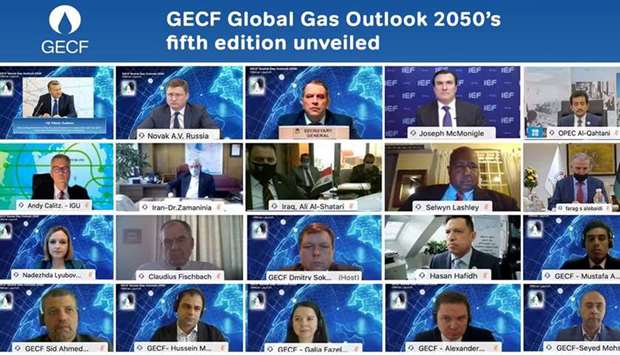Saudi Arabia and Russia are once again heading into an OPEC+ meeting on opposite sides of a crucial debate about the oil market.
Riyadh is publicly urging fellow members to be “extremely cautious,” despite prices rebounding to a one-year high. In private, the kingdom has signaled it would prefer that the group broadly holds output steady, delegates said. Moscow, on the other hand, is indicating that it still wants to proceed with a supply increase.
The positions mirror those taken at recent meetings, but this time the Saudis have a new bargaining chip — 1 million barrels a day of voluntary cuts. The kingdom pledged to make these extra curbs only in February and March, but some see signs that could change as the negotiations get underway.
“The key question for me is how they return the Saudi barrels,” said Bill Farren-Price, a director at research firm Enverus and veteran observer of the cartel. The kingdom could potentially use them as “leverage for getting a deal,” he said.
Bargaining Chip
Ten months after slashing crude production when Covid-19 crushed global demand, the Organization of Petroleum Exporting Countries and its allies are still withholding 7 million barrels a day from the market, about 7% of global supply.
It’s been a sacrifice, with members such as Iraq and Nigeria struggling economically as exports dropped. But it has yielded results, reviving prices to above $65 a barrel in London and shoring up producers’ battered revenues.
By most estimates, the cuts have meant oil demand exceeded production this year by a wide margin. The supply gap grew even wider last week as freezing weather in Texas caused a slump in U.S. output.
When OPEC+ gathers on March 4, it will discuss whether to provide more crude to the market in April. There will be two crucial decisions.
First, the group as a whole must choose whether to restore as much as 500,000 barrels a day, the next step in a gradual revival of production that was agreed on in December, but paused at the January meeting.
Second, Saudi Arabia must determine the fate of the extra 1 million barrels a day of extra voluntary cuts it is making this month and next to help clear surplus inventories even more quickly.
The kingdom initially announced this reduction would be reversed in April, but their latest thinking is fluid and the next move hasn’t been finalized, delegates said. Offering to maintain some part of this voluntary cut in April could give Riyadh a useful bargaining chip if it’s seeking to limit the group’s overall output increase.
“Some easing in production restraint is likely at the March meeting,” said Bob McNally, president of consultant Rapidan Energy Group and a former White House official. “The real bargaining has yet to start and no decision has been pre-baked.”
Looming Debate
Having differed over the pace of supply increases at the last two ministerial meetings, public comments from Riyadh and Moscow indicate that another debate looms.
Russian Deputy Prime Minister Alexander Novak said on Feb. 14 that “the market is balanced.” While he hasn’t publicly expressed a policy preference for the March 4 discussions, Novak argued at the last two OPEC+ meetings for production increases.
Novak’s Saudi counterpart also appears to be sticking to a familiar position.
Acknowledging his stance might be unpopular, Saudi Energy Minister Prince Abdulaziz bin Salman warned his fellow producers against complacency. The group must recall the “scars” of last year’s crisis and be “extremely cautious” in its next move, he said.
“The football match is still being played, and it’s too early to declare any victory against the virus,” the prince said. “The referee is yet to blow the final whistle.”
Saudi Gift
Both arguments have merit.
This year’s 20% rally in crude prices has been sharp enough for major consumers such as India to complain about the squeeze, and for Wall Street banks and trading houses to predict further gains.
Global inventories are falling “very fast” and are set to diminish sharply later this year, according to the International Energy Agency. Demand for petroleum products that cater to societies working and consuming at home is booming.
After freezing storms in Texas shuttered as much as 40% of U.S. crude production in the past week, the clamor for barrels from refiners in some regions has grown stronger. There’s also the risk for OPEC+ that, once the weather-related disruption in the shale heartlands abates, high prices would provoke a new flood of supply.
But at the same time, inventories remain significantly above average levels and the IEA forecasts they could pile up again next quarter. The supply disruption from the U.S. freeze won’t last long enough to cause a shortage, according to OPEC+ delegates, who asked not to be identified because the information isn’t public.
Even after the rally, prices are still below the levels most OPEC members need to cover government spending, giving Riyadh extra leverage.
“The elephant in the room is Saudi Arabia’s gift of 1 million barrels a day in extra cuts,” said Bjornar Tonhuagen, an analyst at consultants Rystad Energy AS. “If the gift is snatched back, prices cannot do else but decline.”








